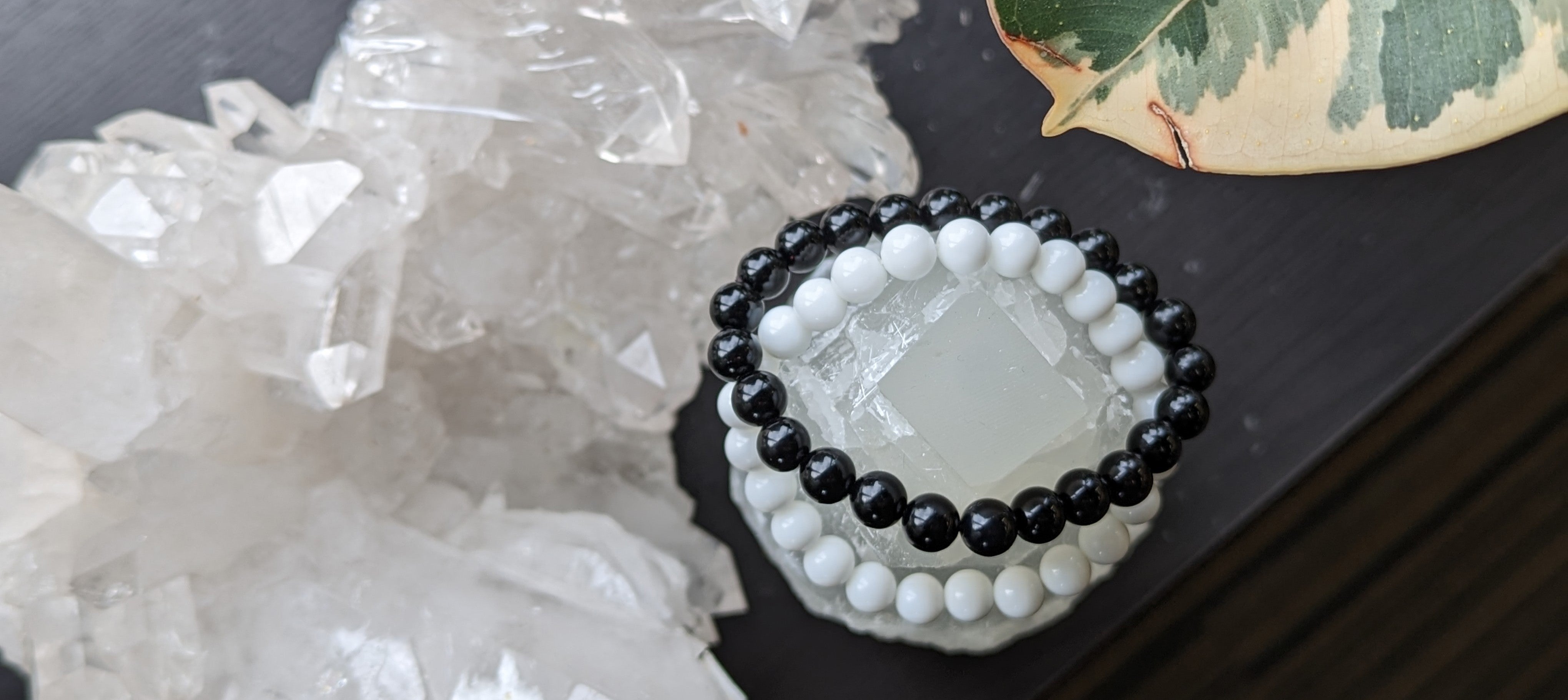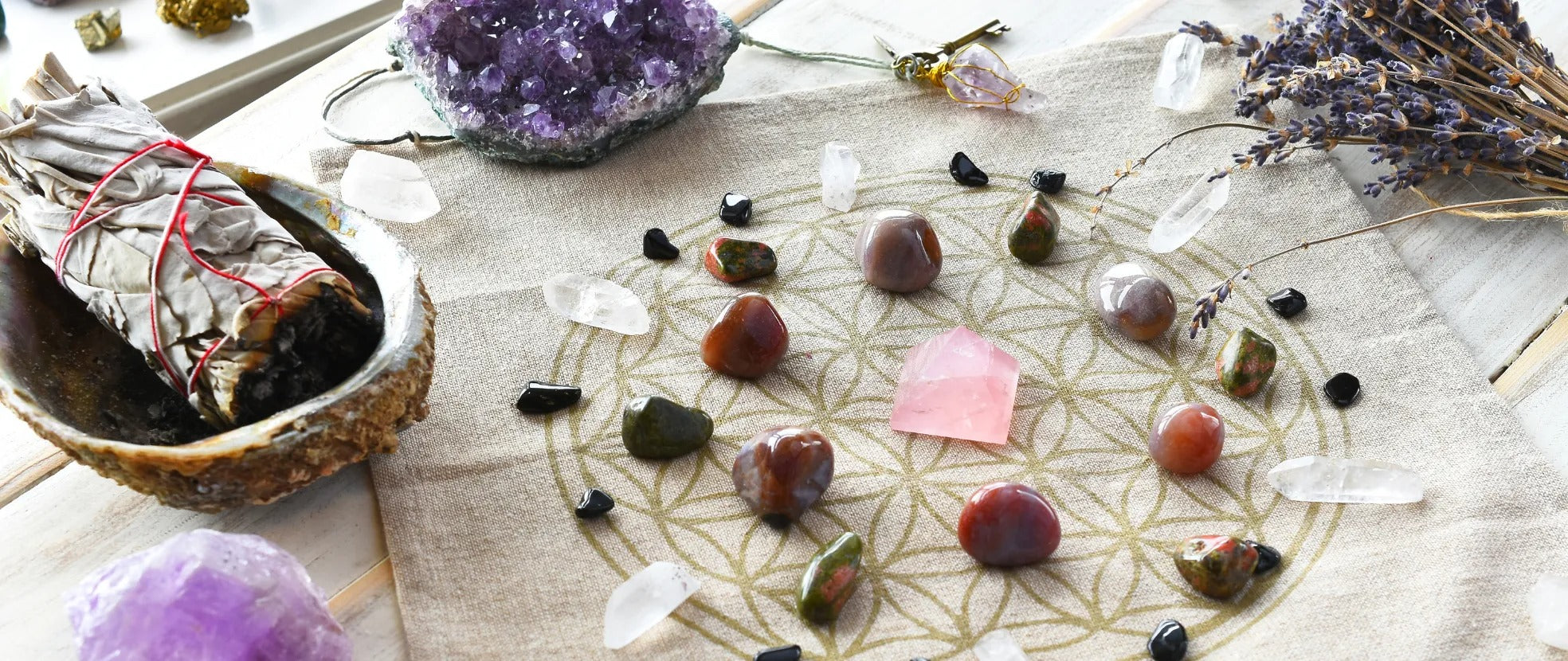Known for its captivating combination of vivid blues and greens, Azurmalachite is a gem material made of the copper carbonate materials Azurite and Malachite. Thus, the portmanteau Azurmalachite.
This rare and beautiful stone is often used to make decorative items and unique jewelry pieces like pendants, earrings, and brooches. Metaphysically, Azurmalachite gemstones are believed to provide insight and stimulate creativity in its users.
Read on to discover the history and properties of this distinctive stone.
The Physical Properties of Azurmalachite
Azurmalachite's distinguishing characteristics are its alternating bands of deep blue and green, which you can only see in a few other stones and minerals. Azurite gives the stone its blue colour and Malachite its green colour. Since both minerals contain copper, Azurmalachite has a specific gravity of 3.6-4.0 which is higher than an ordinary rock. With a Mohs hardness of 4, this stone can easily scratch or break. This is why it is only used in applications that require minimal impact or abrasion.
Azurmalachite stones are often mined in France, Namibia, and the United States. They are found in copper mines or near the mines of other copper-based stones. They form when waters that contain copper filter through a carbonate rock (usually limestone). As the waters descend the carbonate minerals precipitate, resulting in the formation of Azurmalachite.
Like its individual stones, raw Azurmalachite is toxic, according to the International Gem Society. But as long as its dust doesn't get near your nose or mouth, toxicity from these stones is unlikely. Wear a protective mask when handling, cutting, grinding, and polishing rough stones to prevent inhaling or ingesting its particles. Avoid immersing the stone in water or licking it during crystal healing.
The History of Azurmalachite
The name Azurite is derived from the Persian word lazhward which means ˜blue', while Malachite comes from the word molochitis which is Greek for ˜mallow plant.' The stone is often cut into cabochons. The 3,000-year-old Timna Valley mine in Israel is known as the oldest mine for Azurmalachites.
The Lore of Azurmalachite
In ancient Egypt, Azurite was ground and used as colouring pigment in paintings. Malachite was used as a mineral pigment in green paints and eyeshadow powders. Wearing Malachite around the head and arms was also believed to protect against epidemics.
Because of their natural allure, both stones are also used to make jewelry and ornaments. They're also a popular pick among stone collectors. Azurite's deep blue shade tends to fade over time and when exposed to heat, light, and open air. So to seal its colour in, collectors would store raw Azurite in a cool, dark, and sealed environment.
Other than for its aesthetic purposes, Azurmalachite is also used for physical and emotional healing. It is said to heal muscle, bone, and joint problems. Some people also believe it can heal and remove past traumas.
The Metaphysical Properties of Azurmalachite
The union of Azurite and Malachite brings its user increased wisdom, creativity, intellect, and compassion. It also promotes boldness of action, giving its user the confidence to enact change. Azurmalachite is also believed to assist a person in becoming a better version of himself – a person free from arrogance, conceit, anxiety, and vanity.
Note: There is no scientific evidence that supports the effectiveness of mineral stones and crystals in treating ailments. All information published here is purely for educational purposes.
Scientists attribute the healing impact to the placebo effect that takes place when using stones and crystals. Holding stones and meditating with them is said to trigger the release of feel-good hormones (endorphins and dopamine) in the brain.
Sources:
King, H. (n.d.). Azurmalachite. Geology.com. Retrieved March 8, 2021, from https://geology.com/gemstones/azurmalachite/#azurmalachite-properties Azurite-Malachite History. (n.d.). Fire Mountain Gems and Beads. Retrieved March 8, 2021, from https://www.firemountaingems.com/resources/encyclobeadia/gem-notes/gmstnprprtszrtm
Houston, D. (n.d.). Azurite Malachite: Meanings, Properties and Powers. Crystals & Jewelry.com. Retrieved March 8, 2021, from https://meanings.crystalsandjewelry.com/azurite-malachite/
Azurite-Malachite. Desert Rose Direct. Retrieved March 8, 2021, from https://www.desertrosedirect.com/stone-database/azurite-malachite.html
Rice, A. (n.d.). Gemstone Toxicity Table. International Gem Society. Retrieved March 8, 2021, from https://www.gemsociety.org/article/gemstone-toxicity-table/
Stub, S. (April 20, 2018). The Israeli Park with a Valuable Secret. BBC Travel. Retrieved March 8, 2021, from http://www.bbc.com/travel/story/20180419-the-israeli-park-with-a-valuable-secret





